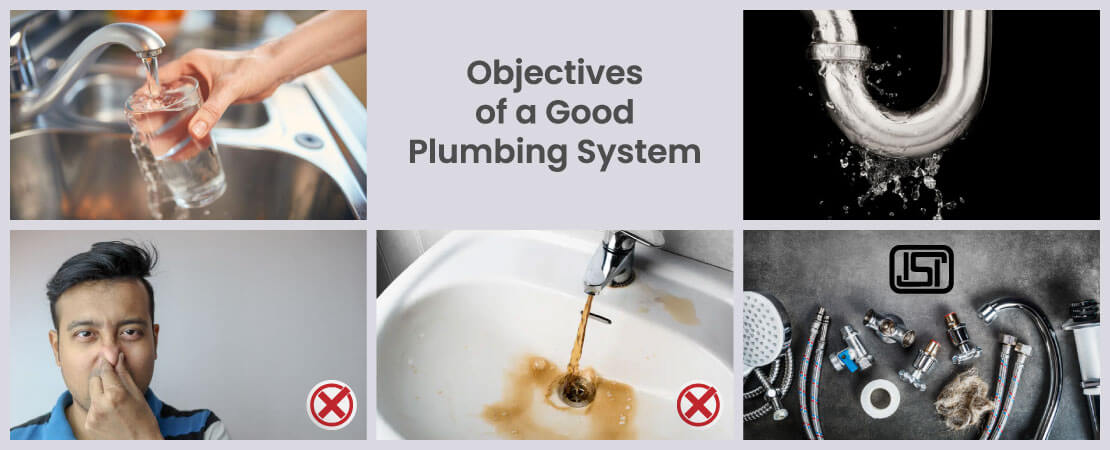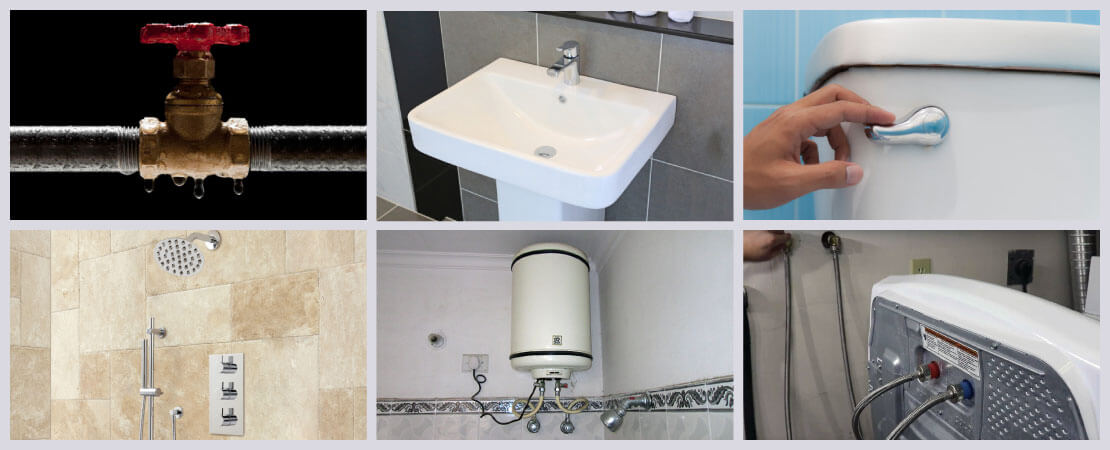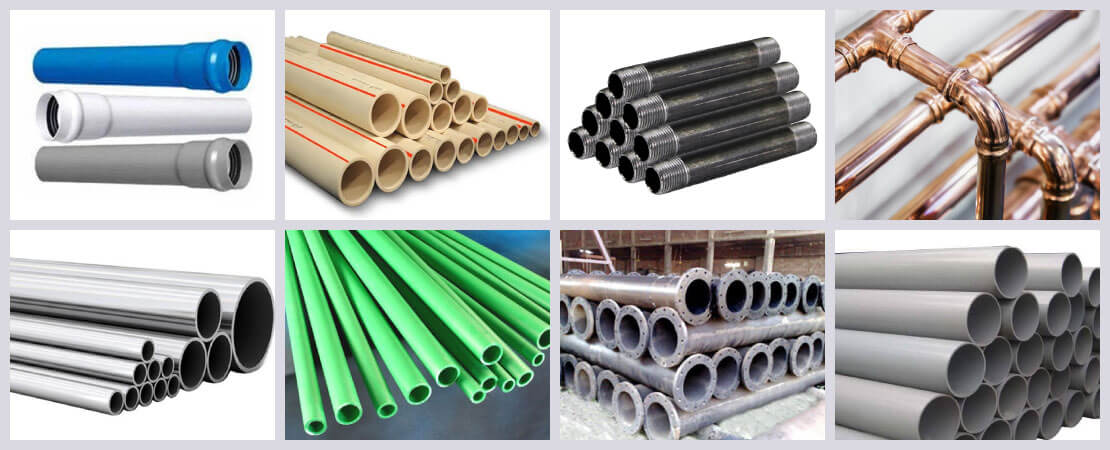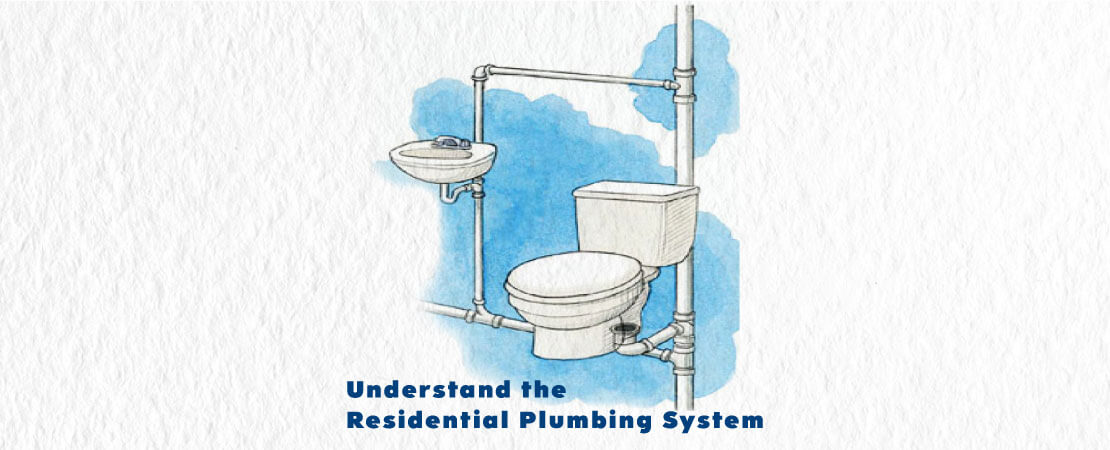Your home’s plumbing system is important to keep your standard of living comfortable. If it is not working properly, you would not be able to take a shower, wash your hands, use the toilet, wash utensils, or run the washing machine. Plumbing systems are responsible for quite a bit. However, most people do not know what their plumbing system is. They just turn the handle or press a button and expect the water to come out at the pressure they want.
As a homeowner, it is important to have a basic understanding of how your plumbing system works so that you can take better care of it and prevent a costly breakdown. Because plumbing is complicated and one of the costliest systems to repair or install in a home, it is important to understand how the system works.
The residential plumbing system is a complex network comprising of hot & cold water supply pipes, fixtures, drain pipes, traps, valves,vent pipes, water storage tanks, etc.
A plumbing system serves two purposes: to supply water for human use, and to get rid of human wastes. It consists of a store of water that is distributed to various outlets.

1. Objectives of a Good Plumbing System
A good residential plumbing system makes a home a more comfortable and liveable place for the family. Ideally, it should:
- Consistently supply safe drinking water
- Efficiently collect and dispose of wastewater
- Have no leaks that can waste water and create further problems
- Prevent foul odours from escaping the system
- Prevent clean water and wastewater from mixing together
- Be connected to fixtures that meet quality standards

2. Essential Parts of Residential Plumbing System
- Water Supply System (flow of water into a house)
- Fixtures and Appliances (where water is used for carrying out various activities)
- Drainage System (collection and disposal of used (waste) water)
a. Water Supply System
- We are all aware that Potable water is supplied by the municipality or through private underground bore well.
- This water enters a house through the main supply line. Water supply in a house is either of direct water supply system or an indirect water supply system.Let us understand it briefly:
- Indirect water supply system: Water from mains is conveyed to storagewater tanks. The underground storage tank is connected to an overhead tank via a pump and a supply line; the water flows from there to any tap or outlet by gravity. This system is mainly used when water pressure in mains is not sufficient enough to deliver water at all faucets with adequate pressure. In India, usually we follow this system.
- Direct water supply system: All water outlets of a house receive water directly from the underground tank with the use of a pump that supplies the water directly from the underground tank to all outlets. Such a pump should be able to continuously supply the line with pressure, so that whenever one opens a tap, water flows out.
To understand in detail about both direct and indirect water supply system, click here1.
b. Fixtures and Appliances
Fixtures, which are typically equipped with faucets, are needed so that the water supply can be used properly. Examples of these are showers, bathtubs, toilets, and sinks. Electric appliances such as dishwashers, washing machines, and geysers use water and must be connected to the waterline. The water in the pipes need to exert a bit of pressure so that it can be used in fixtures and appliances.
c. Drainage or Waste Water Disposal:
The wastewater system collects and disposes of wastewater through the use of gravity. The used water goes down drain traps that prevent foul gases from being released inside the home. The wastewater exits the home through the wastewater mainline, then it is collected in the septic tank or the municipal sewer line.

3. Areas and basic components of plumbing in the Building
a. Bathroom: Basic plumbing components in a bathroom are:
- Main valve – to control the water flow
- Basin – only cold or cold + hot inlet point & one outlet point
- Water Closet – Health faucet point, cistern flush inlet point, outlet soil pipe
- Shower – one head shower, one faucet, shower diverter, one floor outlet pipe
- Geyser – inlet cold line & outlet line
- Additional points like bathtub, washing machine, etc
b. Kitchen: Basic plumbing components in a kitchen:
- Main valve – to control the water flow
- Sink – only cold or cold + hot inlet point & one outlet point
- Additional points like dishwasher, washing area tap point, etc
c. Roof/ Open terrace/ Balcony:
Basic plumbing components in a balcony/open terrace:
- One or more rainwater outlet pipe
Basic plumbing components in a Roof:
- One or more rainwater outlet pipe
- Water tank & pipelines
4. Types of Plumbing Pipe lines in a Building
There are mainly 3 types of water running in a building:
a. Supply Water
- Generally, single source of water (eg bore well water) is used for every use. i.e. drinking, cleaning, bathing and toilet flushing.
- In a large complex with STP plant, water from plant is used for toilet flush only.
- In some areas, water from the government body is used for drinking purposes Only. Bore well water can be used for other purposes.
b. Waste Water: Two different pipes are used for waste water:
- Floor outlet pipe i.e. bathroom & kitchen waste water from bath & cleaning
- Soil pipe – used for WC outlet pipe
c. Rainwater: Rainwater pipe is used for roof & open terrace rainwater outlet.
Apart from this, a vent pipe (usually connected to the soil and drain pipe) is provided for the purpose of the ventilation of the system. A vent pipe is open at top and bottom, to facilitate the exit of foul gases.

5. Types of Plumbing Pipes
a. Fresh water pipes
- Unplasticized polyvinyl chloride(UPVC)
- Chlorinated polyvinyl chloride(CPVC)
- GI pipe (Galvanized iron pipe)
- Copper pipe
- Stainless steel Pipes
- PEX or Cross-linked Polyethylene Piping
- PPR pipe
b. Waste/soil/rainwater pipes
- Cast iron Pipes
- PVC pipes
There are various other types of plumbing pipes for residential buildings or others. Each pipe has its different characteristics and application.
Conclusion
This is your home’s plumbing system in a nutshell. It is much more complex than this, but with these basics in mind, you will hopefully have a better understanding of how your plumbing works and where a potential problem could be. If you would like more information about plumbing, have any questions regarding your plumbing system, want to have plumbing maintenance or you are experiencing a problem and need professional help, then click here.
Reference links used:
1. https://gharpedia.com/blog/direct-vs-indirect-water-supply/

